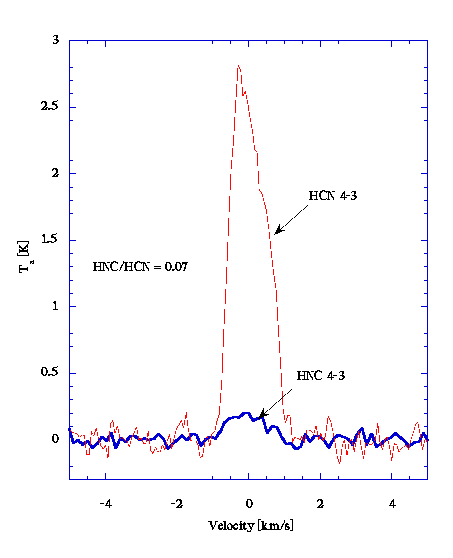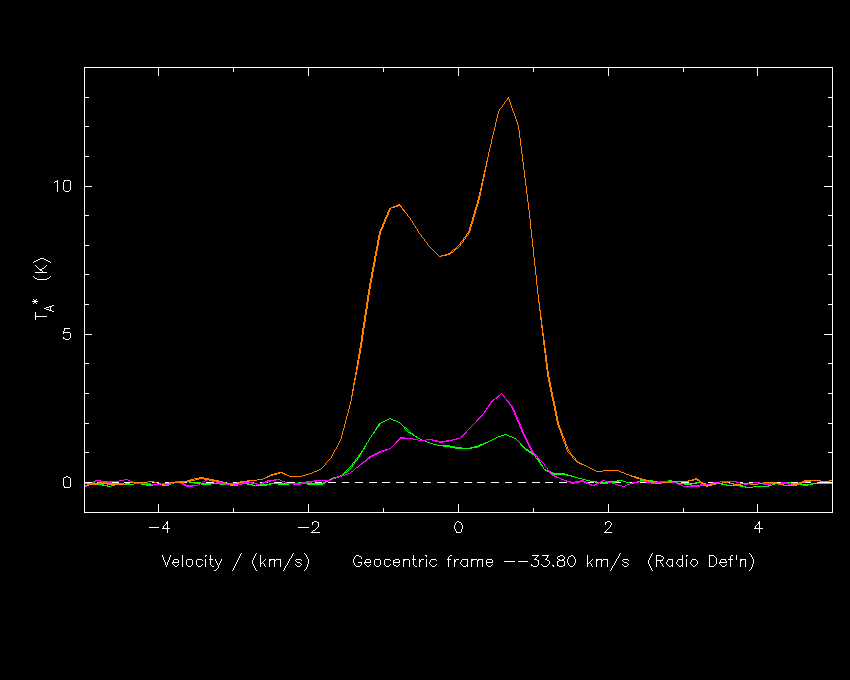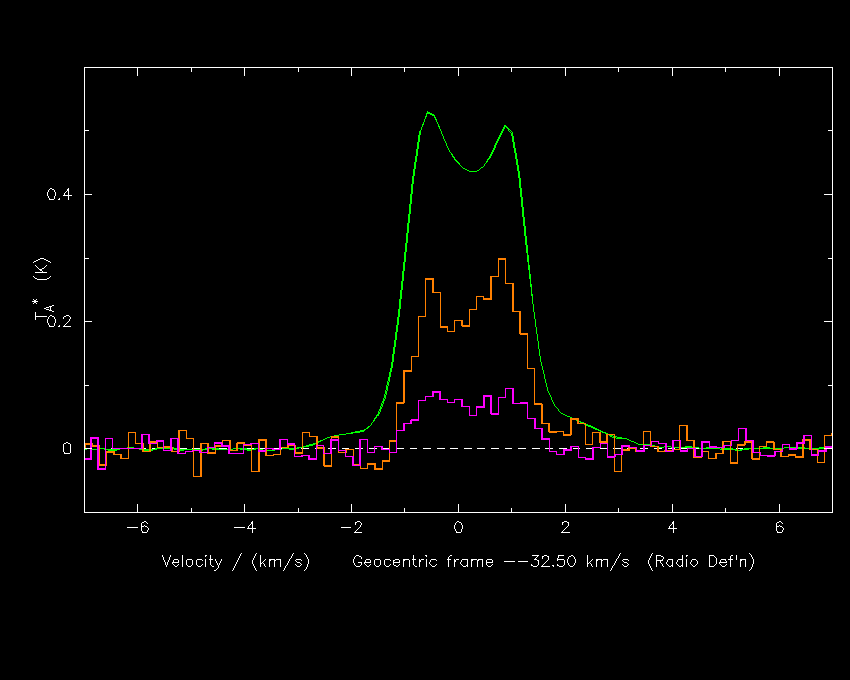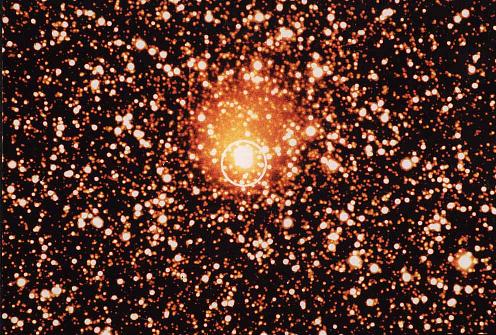
| Hale-Bopp: Other Molecules |
|---|

|
HNC and HCN
The figure below shows the [4-3] rotational transitions of both HNC and HCN, from spectra taken at the JCMT on 1996 12 01.
From IAU CIRCULAR No. 6515:
COMET C/1995 O1 (HALE-BOPP)
H. E. Matthews, National Research Council of Canada and Joint
Astronomy Centre; D. Jewitt, University of Hawaii; and W. M. Irvine,
University of Massachusetts, report the detection in C/1995 O1 of
HNC[4-3] at 362.6 GHz using the James Clerk Maxwell Telescope
on Dec. 1.0 UT. Measured within a 13".5 (29 000 km)-diameter beam, the
integrated line intensity was 0.23 +/- 0.03 Ta* K km/s. Using nearly
simultaneous observations of HCN[4-3], the HNC/HCN production ratio
is estimated as 0.07. This is similar to the value measured earlier
in C/1996 B2 (IAUC 6353). Since the two comets were observed at quite
different heliocentric distances (2.14 and 1.22 AU), the results
suggest that the observed HNC is a parent molecule present in the
nuclear ices and not a product of photochemistry in the coma. The
HNC/HCN ratio is consistent also with an origin for these species in
an interstellar cloud (cf. Irvine et al. 1996, Nature 383, 418).
Cometary HNC was first detected earlier in 1996, in C/Hyakutake.
It is a well known constituent of cold molecular clouds.

|
Comparison of the lines of HCN(4-3) (red), HNC(4-3) (green) and CO(3-2) (purple), from observations taken at JCMT with Receiver B3 on UT 1997 Feb 09. The HCN line is the brightest observed in any comet. The HNC line, fully 2K tall in this spectrum, was unobserved in comets prior to C/Hyakutake in March of 1996. CO was the first spectral line detected in Hale-Bopp (at 6.7 AU heliocentric distance in Sept 1995) and has continued to be a valuable indicator of the outgassing of this comet on approach to perihelion.

|
ISOTOPES of CARBON AND NITROGEN
From IAC CIRCULAR
COMET C/1995 O1 (HALE-BOPP)
H. Matthews (Joint Astron. Centre, Hilo and Herzberg
Institute of Astrophysics, NRC, Canada) and D. Jewitt
Univ. Hawaii) report observations of several isotopes in the
gas coma of C/Hale-Bopp with the James Clerk Maxwell
Telescope. Preliminary measurements from UT 1997 Feb 16 give
H12CN(4-3)/H13CN(4-3) = 90+/-10 and HC14N(4-3)/HC15N(4-3) =
299+/-30. Both ratios include a modest correction for the
effects of optical depth in the HCN line. We believe this
is the first determination of 14N/15N in a comet. In addition,
on UT 1997 Feb 23, we determined C32S(5-4)/C34S(5-4) = 27+/-3.
The CS line was optically thin. Within the uncertainties,
these isotope ratios are compatible with the terrestrial
values 12C/13C = 89, 14N/15N = 270 and 32S/34S = 24.
The 362.0465 GHz transition of DCN(5-4) was also sought.
A 3 sigma upper limit to the line ratio HCN(4-3)/DCN(5-4) =
300 was found on UT 1997 Feb 15, indicating that deuterium
is not highly enriched in Hale-Bopp relative to the
interstellar value.
Still two months before its April 1st perihelion, the submillimeter lines in comet Hale-Bopp have become bright enough to permit the detection of isotopes of Carbon and Nitrogen in the HCN molecule.
The figure shows
Red H13CN (4-3) line at 354.3398GHz
Purple HC15N (4-3) line at 344.2003GHz
Green HCN (4-3) line at 354.5055GHz
all measured on UT 1997 Feb 17 using Receiver B3. The
line of HCN has been scaled down by a factor of 30 to
permit easy comparison with the other two lines.
Preliminary estimates of the line area ratios give H13CN/HCN = 1/70 (to be compared with the Terrestrial value 1/89), and HC15N/HCN = 1/230 (Terrestrial value 1/270). Effects of optical depth will tend to increase the measured ratios.

| ||
| Hale-Bopp | Submillimeter | Jewitt |
|---|
Last Updated February 1997